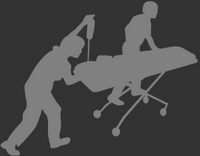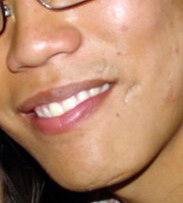I had a dream recently that I went to Indonesia for my summer preceptorship
experience. It wasn't quite what I expected... much more free time than
clinic time (which was nice, but difficult trying to get around not
knowing the language)... challenging to learn what was going on in the
hospital but I got a lot of cool procedural experience out of it... but
when I picked Indonesia, I figured that I'd get to be in the tropics,
working with colorful cultures and exotic microorganisms.
And indeed I did. When I went back home, I started to develop a dry cough.
Then I got a headache and sore joints. I was sick with the flu for a
few days and I would have dismissed it, I got diarrhea. My chest
started to close up and I found myself gasping for air. Fluid was
pouring into my lungs and out of my pores. In my dream, I contracted
the Avian Flu. Then, my family started getting the same symptoms...
For precisely this reason, I'm sure that there is absolutely NO WAY I could
go to Indonesia this summer, as much as I would want to. My Medical
School just wouldn't allow it with the terrorism, the lawsuit
liabilities and the health risk of contracting the Avian flu and
becoming Patient 0... as beautiful and exciting as Indonesia would be
as a vacation/learning opportunity. ;)
The Avian Flu Pandemic is a big worry in the health community but I feel that it is blown off by the general public.
What's the big deal? It's just the flu; I've gotten that before.Here's a few facts about the flu.
Influenza di freddo means "influence of the cold (winter)" in Italian.
Unlike some other microorganisms, the flu virus lies dormant during the summer
months and becomes active. Some speculate that it has to do with the
temperature or the humidity change or the fact that everyone crowds up
indoors -- but we don't really know why this happens. Subtle changes in
the virus' single-strand of RNA alters its envelope and capsule
proteins so each year, we are susceptible to the same viral infection. Hemagglutinin and neuramidase (of
H5
N1 fame) are the major antigens on the surface of the viral package. This process is called
antigenic drift.
Our bodies develop immunity to the flu if you catch it naturally, but it is to past bugs, not present ones. If you get the flu shot, you are getting a vaccine granting you immunity to the Top 3 predicted modified viruses for this year by Top scientists. It's not full protection (washing your hands and having good hygiene also help) but it's better than getting sick.
The regular flu season comes around November or so and peaks in February.
Every 2.4 years, we get a flu epidemic. This means that we have more
cases of the flu than the expected endemic proportions and this
"outbreak" lasts from 6-8 weeks. Since 1580, we have had numerous flu
epidemics recurring about every 14 years. The last epidemic we had was 38 years ago, but the "Spanish Flu" is the most memorable one.
The "Spanish Flu" outbreak of 1918 killed between 50-100 million people in the course of a few months -- that's more than the 38 million casualties of World War I. That's about a third of our current U.S. population wiped out. That's how deadly the flu can be. When the flu virus undergoes
antigenic shift, we are completely susceptible to it and our bodies react with disastrous consequences. The Spanish Flu probably came from Kansas where to different strains of the flu combined.
That's enough for today. You can visit the Flu Wiki if you are interested in learning more @
http://www.fluwikie.com/My next post will compare the regular flu season to the H5N1 flu pandemic that we are so worried about.








